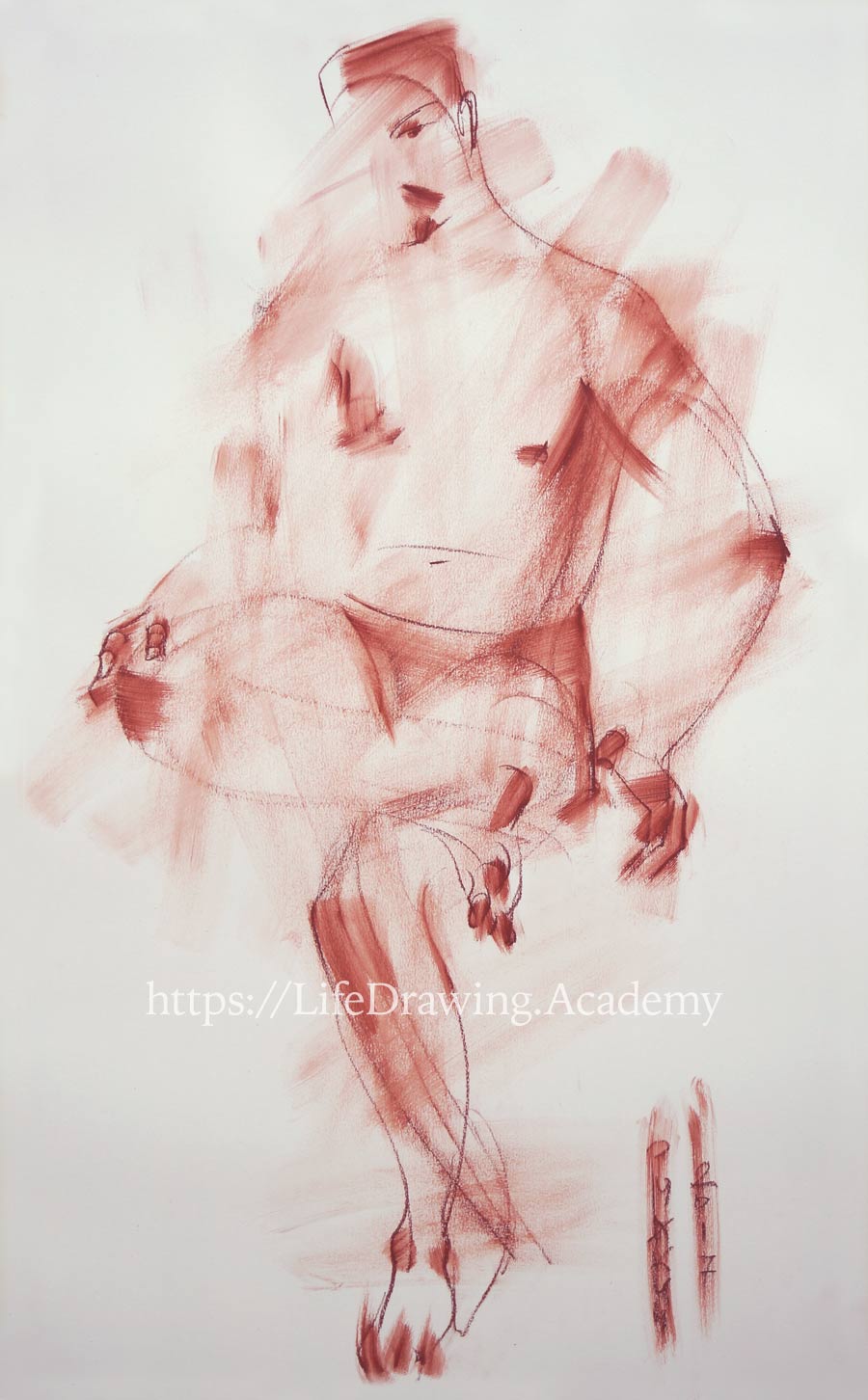Life Sketching in Sanguine
This is your unique chance to get unlimited personal tutoring at a tiny fraction of what it really costs.
Don't miss your once-in-a-lifetime opportunity
Enroll in the Life Drawing Academy now!
Life Sketching in Sanguine
By Alexander Ryzhkin
In this video lesson, we will talk about Life Sketching in Sanguine. There is another way of doing life drawing. If you already have good drawing skills, you can step away from "building" proportions and instead sketch freely without worrying about likeness in portrait.

Your collection of anatomy knowledge and drawing skills will allow you to express yourself in gesture sketches. This way of sketching is also called "sign drawing." We look for fluid lines on the model that flow from one body part to another. It is like recognizing a "sign" or the character of a shape and depicting this sign on paper. It is like Japanese calligraphy. The model's figure itself suggests where lines flow, and you stylize the outlines and contours instead of striving for the exact likeness of shapes.
We are working here with a "symbol" and the volumes of a figure. We look for beauty in these lines rather than precision. When you do "sign" sketching, you can also apply more creative methods of drawing, like smudging red chalk with a damp piece of cloth. This creates an impressionistic look in an artwork. Here is one piece of advice, though: using creative methods is no substitute for learning good drawing skills! Such expressive drawing is good only when you have already learned how to draw figures from life constructively, when you already possess the necessary knowledge of anatomy and proportions. Otherwise, your artworks will look naïve and amateurish. After the first layer of impressionistic marks, we can continue with small details, fine-tuning the outlines and contours. This creates some mood and feelings in drawing.
I'm smudging red chalk with a damp cloth. This leaves strong marks on a paper. Although all lines are approximate and stylized, I am still drawing what I know about anatomy and proportions. Some proportions can be bent on purpose to emphasize a certain "sign" or create a special look. This is not absentminded drawing, but very much a "calculated freedom" of expression. We make here some creative representation of a human figure, but all anatomical knowledge and correct proportions are still in place. This drawing comes out not as an accidental result of random strokes here and there, but as a structured system of the necessary knowledge of a human anatomy, body proportions, and constructive drawing principles. The only difference here is that we can now bend the rules and exaggerate marks to create a more expressive symbol of a human form. Such sketching is the final step of your life drawing education, when you have enough experience and knowledge to step away from classical drawing methods if you want to push your creative style in some other direction. By no means would I advise you to start learning life drawing by doing such impressionistic sketches. That might throw you off the right path, and you would never get the right skills of constructive drawing...
[ The full lesson is avaibale to Life Drawing Academy members ]
This is your unique chance to get a lifetime academy membership and a dedicated team of art teachers.
Such unlimited personal tutoring is not available anywhere else.




